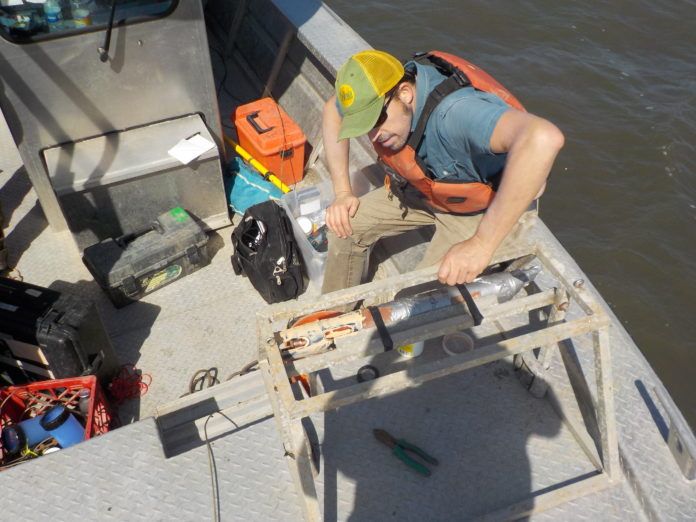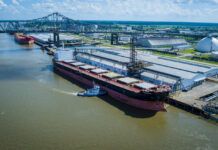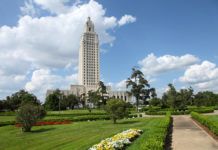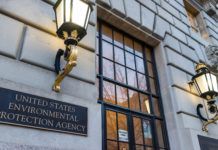Anchored by a new building and a renewed sense of purpose, the Water Institute of the Gulf in Baton Rouge is turning its gaze to some rather enduring issues plaguing two Louisiana ports in hopes that it can use scientific research and modeling to generate solutions.
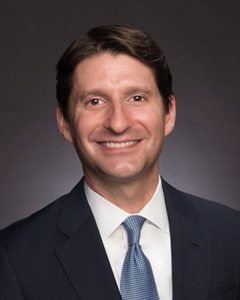
President and CEO Justin Ehrenwerth says current research falls in line with the institute’s desire to support the “working coast” by taking a holistic look at how nature can be utilized to enhance both critical infrastructure and the environment. Supporting in that effort is the newest addition to the 35-acre not-for-profit institute, the visually distinctive Center for Coastal & Deltaic Solutions along the banks of the Mississippi River.
At Port Fourchon, researchers are currently working a two-pronged initiative to determine the cost-worthiness of dredging the port’s canal to 50 feet and to also recommend potential environmental applications for the dredged material. To facilitate the process, the institute entered into a financial partnership with Shell, Chevron and Danos—each having a vested interest in protecting the port’s infrastructure.
Chett Chiasson, executive director of the Greater Lafourche Port Commission, says the research will be an important part of a feasibility study to be submitted to the U.S. Army Corps of Engineers this summer. “This is a big deal for us,” Chiasson says. “The Water Institute of the Gulf has the technology to model shoaling rates, which will help us determine the cost for maintaining it, as well as the best procedure for maintaining it.”
Chiasson says the deeper draft could ultimately attract businesses in the offshore rig repair and refurbishing market. He estimates that about $100 million in potential service work leaves the U.S. annually due to inadequate service capacity. The canal deepening could also support the planned $800 million Fourchon LNG LLC production and export facility at the port. “Their initial development (at 2 million tons per year) is good with the amount of depth we currently have, but if we can get a deeper draft it would allow them to expand,” he notes.
About 20 million cubic yards of material would be dredged during the project, of which 10-12 million cubic yards would be needed to expand the port and mitigate wetlands. The remaining 8-10 million yards of material could be utilized for environmental purposes. With the assistance of partners Chevron, Shell and Danos, a second Water Institute-led research project is devising ways to use the material to protect the port’s critical infrastructure, create new wetlands and ecosystems, and provide a protective nature-based defense.
“All of a sudden you have the energy sector, environmental advocates and community leaders all standing on the same side,” Ehrenwerth says. “I think that’s one of the things that’s exciting about what we’re doing in south Louisiana. A lot of people are talking about green infrastructure. We actually have the opportunity to do it at a scale that’s not happening anywhere else.”
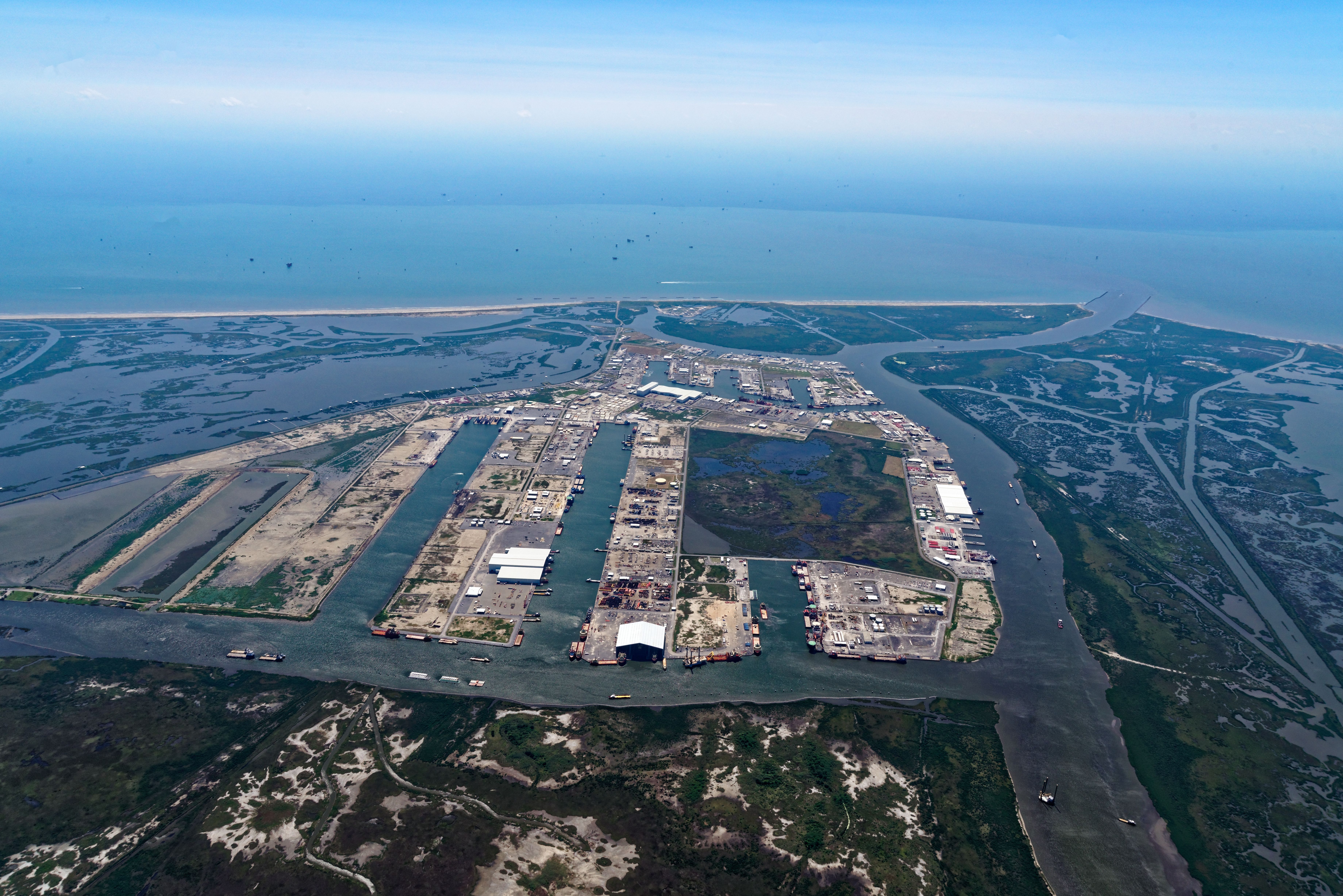
During the data accumulation phase at Fourchon, researchers analyze sediment movement, hydrology and water quality. The information is then plugged into a numerical model created under the direction of Dr. Ehab Meselhe, vice president of engineering and a leading modeling expert. Using high-powered computing capabilities, the model “churns” through a range of scenarios and alternatives.
“The models can crunch the numbers in a way that we obviously cannot,” Ehrenwerth adds. “We look at various scenarios—if we put the material here versus here, where will we get the best wave attenuation benefits or best erosion prevention benefits?”
Working in a similar manner, the institute recently compiled data at the Port of Lake Charles, which has long been plagued by a narrowing channel. Port of Lake Charles Executive Director Bill Rase fears dredging issues in the Calcasieu Ship Channel will one day severely restrict his port’s ability to support growth in the LNG market.
“The channel needs 97 million cubic yards of disposal capacity for dredged material,” Rase said at a 2017 Louisiana Oil and Gas Association meeting, adding that only 5 million is currently available. He estimates the cost to keep the ship channel open in a deep draft capacity will be $79 million over the next 20 years.
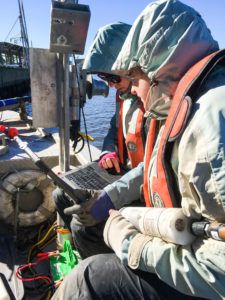
Tackling the problem from a scientific angle, Ehrenwerth says the institute is using a three-part approach. “Number one, where’s the sediment coming from? Number two, what can be done to stop it from going into the channel? And number three, where’s the best place to put the dredged material?”
As a first step, the Water Institute of the Gulf completed field data collection this spring to determine the source of the sediment, i.e., wave action from vessels. “While results are not complete, we have seen the introduction of sediment into the channel from some areas we didn’t expect,” Ehrenwerth says. “It’s too soon to give any hardcore and solid results, but we’re certainly learning about the system as we collect data.”
No matter the project, he adds, institute researchers analyze a challenge and use the best science to try to find a solution, thereby advancing the understanding of coastal, deltaic, river and water resource systems. “And in our view, you can often achieve multiple outcomes with the same strategy. Fourchon is a great example of this. You can protect the port and add environmental benefits at the same time, although we’ll never advocate for one project over another in our analysis.
“This is where the environment and the economy are intrinsically connected. If we have environmental stressors and challenges that are not addressed, our economy suffers. People ask, ‘What are you all focused on? Are you focused on what’s good for the economy or what’s good for the environment?’ We always say ‘Yes. Exactly.’”

